-
Posts
219 -
Joined
-
Last visited
Content Type
Forums
Detector Prospector Home
Detector Database
Downloads
Posts posted by Chet
-
-
A graphite cabinet or housing shield does not have to be grounded to act as an effective shield. Any electrical EMI energy will be absorbed and dissipated as miniscule heat.
Early television sets emitted a lot of EMI. To meet government requirements wooden and plastic cabinets were either internally painted with conductive paint or lined with thin screening or thin tinfoil. Some shields were grounded to the chassis some were not.
It appears that on the GPX 6000 they may have or maybe not intended to ground the graphite shield. The real test would be to compare one without the ground connection before and after the repair.
-
2 hours ago, Steve Herschbach said:
Well having been a dealer for 35 years if you gave me your money to order a coil that is advertised as having a coil cover I'd have got you the coil cover. And then I'd have beaten it out of the manufacture on my own, not dump it on you. Or eaten it as I did many times because my customers are my customers, not the manufacturers customers. But if it's advertised on the website as having a cover they would cough it up, I have no doubt of that.
FYI for anyone dealing with Garrett email is not their forte. Call the 800 number and talk to Rusty.
When I was in high school I worked part time in a one man Radio and TV repair shop on the Oregon coast. One day a logger carried a TV in and immediately cursed out the shop owner for faulty work from a previous expensive repair several months earlier. The owner assured him that it would be put right. Then ask him what problems he was experiencing. He stated that it didn’t have any audio. I remembered that the previous repair was for no picture. The owner asks him to return in an hour and it would be ready to pick up. A couple of new audio amplifier vacuum tubes were replaced to correct the audio problem. And the customer went home with no bill for the audio repair.
I asked the owner why he didn’t charge him for what was clearly unrelated to the previous repair. He stated that in a small community competing with other repair shops when a customer walks out on you, all of his friends walk out with him.
Responsible dealers and manufacturers likewise take care of their customers.
-
On 1/18/2024 at 3:13 PM, DSMITH said:
Hi Wiggins at one time I had a pair of these that I used when I was the foreman on a landscape maintenance crew for a school district, I would actually wear them while running a mower which mowers have very loud volumes when the blades and engine is running
I would listen to music through these while I was operating a mower and they had great volume that I could hear music over the mower through these, they were made by Panasonic and are no longer in production, they were produced back in the early 2000s
https://www.aptx.com/products/panasonic-btg-s10-bone-conduction-headset
if Avantree could produce something like these I believe they would work great for Metal Detecting
A Panasonic 10RP-BTGS10 Bone Conduction headset was purchased from eBay. They have the same volume as the previous bone conduction headset purchased. So it appears that bone conduction cannot overcome age related loss of hearing as well as the Avantree Torus Speakers.🤫
-
Time constant/conductivity properties extracted from Minelab document below;Metal detectors may differentiate between different non-ferrous targets by measuring how well eddy currents flow in them. This is determined by a target’s “time constant,” but is often referred to as “conductivity”, which is not a suitable term as conductivity is not the only property of a target that determines its time constant.
Two properties of a metal target determine its time constant. One property is called the target inductance. This inductance may be thought of as the effective “mass” of the eddy currents, and which is basically the size of the eddy current path. Thus, for a given eddy current flow, the bigger the effective target inductance, the bigger the “momentum” of the eddy currents.
Another property is called target “conductivity,” which is a measure of how easy it is for eddy currents to flow. This is the opposite of electrical resistance. High conductivity (low resistance) means the eddy currents flow easily (low current “friction”). Low conductivity (high resistance) means high eddy current “friction.”
The better the target conducts electricity and the bigger the inductance, the longer the time constant. That is, a high eddy current momentum with a small slowing resistance, like a heavy vehicle with low friction, takes a long time to stop.
Conversely, the poorer the target conducts electricity and the smaller the inductance, the shorter the time constant. That is, a low eddy current momentum with the resistive “brakes” hard on, like a light vehicle with high friction, takes only a short time to stop.
Time constants vary very considerably between targets. Small bits of aluminum foil have very short time constants whereas, for example, gold ingots have a much longer time constant.
Here is a table of targets of increasing time constants (from short to long):
small bits of aluminum foil
fine jewelry chains
small old Roman coins
US dime (small 10c coin)
solid US civil war bronze belt buckle
solid Bronze Age axe head
large gold ingot
large thick copper or aluminum plateGold nuggets cover a very large range of time constants, from very short to longish. However, it should be noted that even large gold nuggets mostly produce relatively short time constants compared to similar sized man-made metal targets of high conductivity, because of the way gold nuggets are formed; they have many voids and impurities which significantly reduce conductivity and inductance.
The magnetic properties of ferrous targets cause them to have a high inductance. This is because the magnetic field created by the eddy currents is made stronger by the magnetic property of the ferrous targets. In effect, this “amplified” magnetic field makes the inductance of the target higher. So, even though most ferrous targets may have poor electrical conductivity, they usually have long time constants because of their high inductance.
Only pieces of steel or iron that have almost completely rusted through, or extremely thin steel wire have short time constants 2 (e.g. highly rusty steel/iron flakes or very thin staples.)
However, some mildly ferrous targets may also have short time constants, e.g. some mildly ferrous coins or weakly magnetic stainless steel, and some plated steel targets too.
The most common discriminator setting is to discriminate against ferrous targets and the shortest time constant non-ferrous targets.
Extracted from page 4 & 5 of the following Minelab document;
http://www.minelab.com/__files/f/11043/METAL DETECTOR BASICS AND THEORY.pdf
-
Did they indicate which coils were used to develope the chart?
-
1 hour ago, phrunt said:
Found the patent, AU2023900847A0 - New method for detecting fast time constant targets using a time domain metal detector - Google Patents
It does tick a lot of boxes though, especially the price and the GPX coil compatibility. Auto ground balance too, and pinpoint of all things?
Were you able to open the text for these patents? I tried with no success.
-
23 minutes ago, DSMITH said:
I like your headphone set up @Chet other than the wire aspect, how is the volume of the headphones ???
The phones have a rechargeable battery powered amplifier. With full volume they are acceptable. There may be a limit to how much volume can be achievable with bone conduction? On cold windy days I use the same receiver unit with over the ears headphones.
-
1 hour ago, Wiggins said:
Unfortunately, according to our engineers, it doesn't seem like making a Bluetooth LE Audio transmitter is possible at the moment. We'll likely have to roll with either atpX Low Latency or FastStream.
I used two Avantree Saturn Pro aptX Low Latency transmitter/receiver units for years with my GPX 5000 with earbuds.
I am currently using one as a receiver that pairs with my GPX 6000 with Bone conduction phones.
It would be great if Avantree could combine the Avantree Saturn Pro apt Low Latency electronics into a set of bone conduction phones to eliminate the dangling cord and controls and the charging of an extra battery.
-
4 hours ago, Aureous said:
Looks like I'll have to tear-down a 6000 coil just to take a look at that. Very curious..... With your whole-coax-and-chip idea, do you find any bump sensitivity from the external connectors outside the coil?
Any movement of metal near the coil will sound off. It requires some Velcro to secure it to the shaft. I installed a male and female connector in the GPZ 7000 coil cable approximately 24" above the coil to use X-Coils. It was padded inside the shaft to prevent the coil from reacting to bumps. To demonstrate to the nonbelievers I duct taped a Cola can to the shaft at 24" above the coil; ground balanced and swung the coil over a 0.08g test nugget with no detection loss. The can did not create any bump signals. It did sound off as the position was altered when the detector was set down or raised off the ground.
Many types of wire have been used in coils. One company even used aluminum foil ribbon. Signal returns vary in strength and time duration. Most any good quality wire will work with larger targets.
The signal returns from small gold nuggets is weak and extremely short in time duration. Gold detector coils require small insulated low capacitance strands of wire to be efficient in retaining the short duration higher frequency signals received from small gold nuggets. Litz wire is being used by most companies for gold detectors.
-
1 hour ago, Aureous said:
Just wondering Chet, how far off are the specs on the various coils you are winding, versus the legacy GPX coils? The X coils guys were suggesting that the 6000 and 5000 coil specs are near identical..... say in the 290-350uH inductance and <1ohm resistance ranges. You say that the older coils don't work as well on the 6000 using your adapter set-up???
Coil inductance and resistance is in line with Minelab Detector coil specifications. I try to wind them for an inductance of 300uH and a DC resistance of 0.33 ohms. Depending on the wire gauge and rounding off on complete turns they have all been between 290uH to 315uH and 0.25 to 0.5 ohms. It would be beneficial to know more about the limitations on these specifications. When I first started winding coils I ran into some coil overload and coil fault alerts and detector shutdowns. Since then I haven’t strayed far outside the normal specifications.
GPX detectors prior to the GPX 6000 had the internal graphite EMI coil shield connected to the coaxial cable shield. The GPX 6000 has separated the EMI shield from the coaxial cable shield and run a separate ground wire. This keeps some of the EMI cross current signals out of the receiver. It has also eliminated some standing waves and cable movement sensitivity experienced with some of the older coils and detectors.
-
GPX 5000, GPX 6000, GPZ 7000, Coil Air Tests
In pursuit of large gold I have experimented with winding some test coils and did some air testing. Results are with my poor hearing and varying EMI conditions. But the measurements work for my personal comparison testing. I selected to use a USA $50 dollar 99% gold coin and a 4 inch square flat aluminum sheet that was cut from the side of a soda can as test targets. They are much easier targets than large gold nuggets but I wanted solid consistent targets for comparison purposes. The measurements for the GPZ -34”x 17” are preliminary and will be finalized in Nevada this spring. I am working on a new GPZ 7000 coil and a new GPX 6000 coil. Since Litz wire is expensive it is reused for the next brainstorm that wakes me up.LOL
Detector and Coil Description Air test in inches 1oz gold coin Aluminum 4” sq
GPZ 7000 Tests
GPZ-34" x 17" EMI cancel mode OFF, 3lbs To be tested in Nevada this spring
GPZ-35" x 17" in EMI cancel mode 24 40
GPZ-19 Minelab DOD 25 45
GPZ-14 Minelab DOD 20 36
GPX 6000 Tests
30" x 30" = 34"RND 1.86mm flat spiral Litz wire 27 42
24" x 24"= 27"RND 1.86mm flat spiral Litz wire 27 37
23" RND 2.3 mm 14T 3 vertical rows Litz wire 26 36
17.5" RND 2mm Litz, spiral flat wound ID 14" 22 36
17" RND Vertical Wound 2mm Litz wire 21 34
17" x 13" Minelab GPX 6000 coil 18 36
11" Minelab GPX 6000 17 32
14" Minelab GPX 6000 DD Coil 14 22
6" GPX 6000 DIY flat spiral close wound 11 21
GPX 5000 Not modified
39" RND Flat Spiral Wound, spaced 0.5” 23 36
25" Nugget Finder mono coil 22 38
27"x27" Flat Spiral Wound, spaced 0.4" 20 34
18" Minelab mono 19 34
24" x 24" flat spiral close wound 19 30
30" x 30" flat sq spiral close wound 17 32
17" Vertical Wound 2mm Litz wire 16 30
34" x 17" figure 8, 13t, 1.8mm litz wire 15 26
GPX 6000 17" x 13" Minelab mono using GPX 5000 14 26
-
3 hours ago, PhaseTech said:
Chet, your air test results, where these with the detector in Normal or Difficult setting?
I know Normal has a noticeable improvement over Difficult with the 14" DD.
The areas that I detect are mostly mild sand and soil so I run the GPX 6000 in Normal, No Threshold and Auto 2. I take the coils out of town to get away from EMI and run the air tests with the same settings. I test my GPZ 7000 coils with Normal, High Yield and 20 sensitivity.
When in the Nevada desert I have accomplished a lot of testing in the ground lowering nuggets down a vertical PVC pipe. The results are pretty close to the air tests. The big variable is the shape of the nuggets. I record all of the data on test sheets and when later entering the data into Excel charts and plots some of the extreme nugget data is thrown out. The next outing some of the wild nuggets stay home.
-
9 hours ago, Aureous said:
Cool, thats the smart way to do it, keep the coax attached to the chip and remove the whole lot. Shielding is spot on. Are these results all air tests??? Were you able to ground balance any of the larger coils or were they all board-builds only....without shells???
Two GPX 6000 coils; a 6" RND and a 26" x 22" were completed and tested in the field. They both ground balanced and worked fine. The 6" picks up smaller bits than the stock 11". The 26" x 22" was wound with 12 AWG stranded copper coated aluminum wire to reduce cost and weight. That was a big mistake that cost some inches off of depth. Litz wire is expensive so when possible it is reused to experiment with on the next brainstorm.😄 The attached photo is the 6" coil with the coax and module. The chip and ferrite housing is inside a blob of epoxy which now is covered with heat shrink tubing. The coil shield is connected by a separate spade connector
-
20 minutes ago, Aureous said:
So you plucked the 'handshake' chip out the stock coils and made up an adapter for these tests? Fascinating results... The 6000 is not regarded as a deep-seeking detector, with both the 5000 and 7000 obtaining better results in all tests that Ive seen. But, these tests seem pretty good. All obviously mono's with but with proper shielding????
I purchased a used GPX 6000 Mono coil and removed the cord and chip module together to accomplish the tests. I use a two conductor male and female connector to attach the test coils. I have tested some of these coils on my GPX 5000 which is unmodified. The GPX 6000 results are a few inches better than the GPX 5000. I shielded two of the coils with graphite conductive paint (100-150 ohms per inch). The before and after measurements where the same. The GPZ 7000 coils are more difficult to make and balance but is a better choice so that is that is the way I am preceding.
-
GPX 6000 test coils
I know of some areas that have produced some large nuggets. So in pursuit of large gold I have experimented with winding some test coils and did some air testing. Results are with my poor hearing and varying EMI conditions. But the measurements work for my comparison testing. On bad EMI days the larger coils are very noisy. A 20 inch 12 AWG Litz coil might be the next one to test. Meanwhile I am experimenting with some large GPZ 7000 coils.
Have a good day,
Chet
Coil Description 1oz gold coin Air test inches
30" x 30" = 34"RND 1.86mm flat spiral Litz wire 27
24" x 24"= 27"RND 1.86mm flat spiral Litz wire 27
23" RND 2.3 mm 14T 3 vertical rows Litz wire 26
17.5" RND 2mm Litz, spiral flat wound ID 14" 22
17" RND Vertical Wound 2mm Litz wire 21
17" x 13" Minelab GPX 6000 coil flat spiral layers close wound 12 AWG Litz wire 18
11" Minelab GPX 6000 flat spiral layers close wound 12 AWG Litz wire 17
14" Minelab GPX 6000 DD Coil 14
6" GPX 6000 DIY flat spiral close wound 56 turns 2 layers 1.86mm Litz wire 11
-
I love the Avantree Torus and would purchase Avantree Bone Conduction phones if they were available with the same Torus bluetooth receiver.
-
Some of the mine entrances have rat nests present which may carry diseases.
Years ago some buddies and I repelled into a limestone cave in Alabama. I was the last one squeezing through a long narrow passage when I felt something trying to crawl up my pant leg. I rolled over on my back to be able to see a large Nutria like rat with my leather boot lace in his mouth. I kicked at it several times before it made off with part of my boot lace. When we returned to climb up out of the cave we found that the rat had chewed the leather handles off an equipment bag. The bag had a hole in it and some leather camera cases inside where missing their straps. We were happy to see that it didn't chew into our repelling line. -
Hi Steve
The GPX 6000 does well when there is larger gold. The attached photo is a 16g nugget on top of the pick. It was found at 12” depth with the 17” x 13” coil.
The other photo is my split with the land owner for one weekend of detecting. We divided the nuggets by alternating on the weight with me getting the 16g then he got the next one a 12g etc…….
Over many years I have found more total weight with the GPX 5000 and GPZ 7000. I like the performance of the GPZ 7000 over the others. The GPX 6000 is the preference for lightweight and finding small shallow nuggets.
Attached is a photo of my latest coil for the GPZ 7000. I haven’t had it in the field yet. I designed it with a Noise Cancel switch which reverses the polarity of the balanced receiver coils. Air tests inside the house with a tremendous EMI level with the Noise Cancel switch ON it out performs the Minelab GPZ-19 coil. It weighs 3 pounds vs the GPZ-19 at 4 pounds.
Have a great day,
Chet -
Detectors such as the GPX 5000 and GPZ 7000 are designed with power, sensitivity and signal processing to operate with a wide range of coil types and sizes. They work exceptionally well with larger coils for large deeper targets.
The video above is not a balanced demonstration. The GPZ 7000 is at a disadvantage with the 14 x 13 DOD coil vs the 15 x 12 mono on the GPX 5000.
The 15 x 12 mono coil uses the full surface area for transmitting and the full surface area for receiving. The GPZ-14 DOD coil uses one half of the surface area for transmitting and one half of the surface area for receiving.
A better test would have used the GPZ 7000 GPZ-19 coil with different detector settings. The GPZ-19 coil was designed for deeper larger targets. It is so heavy that it isn’t used much.
Newer gold detectors that have been designed with smaller batteries, smaller coils and special signal processing are excellent for gold nuggets at shallower depths. They can perform well at depth with larger coils when available.
The GPX 6000 will perform quite well on larger deeper targets with larger coils. I have air tested my GPX 6000 17” x 13” mono coil with my GPX 5000 and found the GPX 6000 a bit better than the GPX 5000.
I build some coils for my GPZ 7000 and the GPX 6000; the GPX 5000 is used to test and balance the coil windings before they are used on the newer more expensive detectors.
The AXIOM will probably work well with larger coils when they become available.
In my opinion the lightweight and simple operation of the GPX 6000 with the currently available Minelab GPX 17” x 13” coil would serve you well for a wide range of detecting.
-
I found some good user information at the website below. The Double D mode is the proper mode.
https://www.fortbedfordmetaldetectors.com/coiltek-drag-coil-goldhunting-anti-interference
-
 1
1
-
-
Coiltek sold three models of the Mother Ship coil; Mono, DD Pro and a Salt / AI coil. Maybe I missed it but I didn’t notice which model you have. Each model will respond the best in the environment that it was designed for.
In perfect ground with no EMI a Mono coil will beat the DD and the AI coils.
A round lead test target will return less signal strength than an irregular shaped nugget of smaller size and weight. Try chopping up and pounding out some large irregular shaped pieces of lead and plant them in the ground as a test patch to drag your coil over.
In my opinion you have a better more stable coil than a Do-It-Yourself coil.
-
On 7/18/2023 at 7:55 AM, jasong said:
That's the only thing I don't like about my Carrot, got to keep it mounted at my shoulder or behind my back (using bigger coils anyways) otherwise I can hear it on every backswing, faint, but enough to drive me crazy since I try to eliminate as much noise as possible.
Interference is caused by the internal pinpointer tuned coil. It can be eliminated by shielding it with an aluminum foil lined holster.
Wrap the lower half of the pinpointer with a layer of aluminum foil. Then wrap the aluminum foil with tape to hold it in place. Then glue it inside of the belt holster that came with the pinpointer. Be aware that the aluminum foil shielded holster may be detected when detecting high on the adjacent side of a gully.
This worked for years with my Garret pinpointer and GPX 5000.
Some of the newer pinpointers have circuity that disconnects the coil when turned off which prevents them from being a problem except at close range.
-
Your ideas may have some merit but I am kind a nuts and bolts, do it your self-person. This would not be an easy experiment.
One mistake in your calculations is the coil inductance of 300 milihenries should be 300 microhenries. So an 8 inch coil would require around 33 turns of 1.86mm Litz wire. Attached is a calculation for an 8 inch mono coil. It uses 65 feet of wire with a weigh of 0.55 pounds.
From: http://electronbunker.ca/eb/InductanceCalcML.html
-
Iron will not work because it retains a magnetic charge and delay in current changes.
I have wound some ferrite coils approximately 1” x 10” for the GPX 5000. It was an experiment to help a friend develop a probe that would go into drilled holes in a gold mine. My friend did finish one on his own. I never heard of any success in finding gold pockets with it. It did a great job in reducing the wire gauge and number of single layer windings. Instead of the long rod a thick round shaped core could be used. But the weight of the ferrite core material far exceeds the normal weight of standard windings.



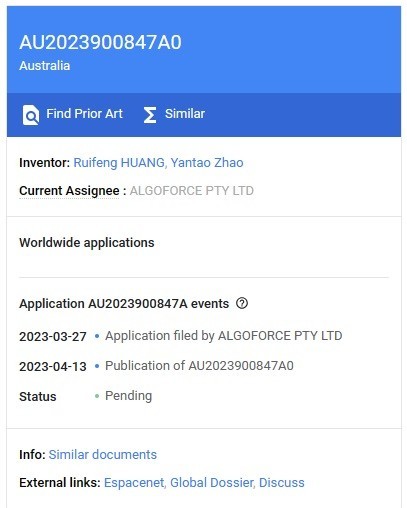
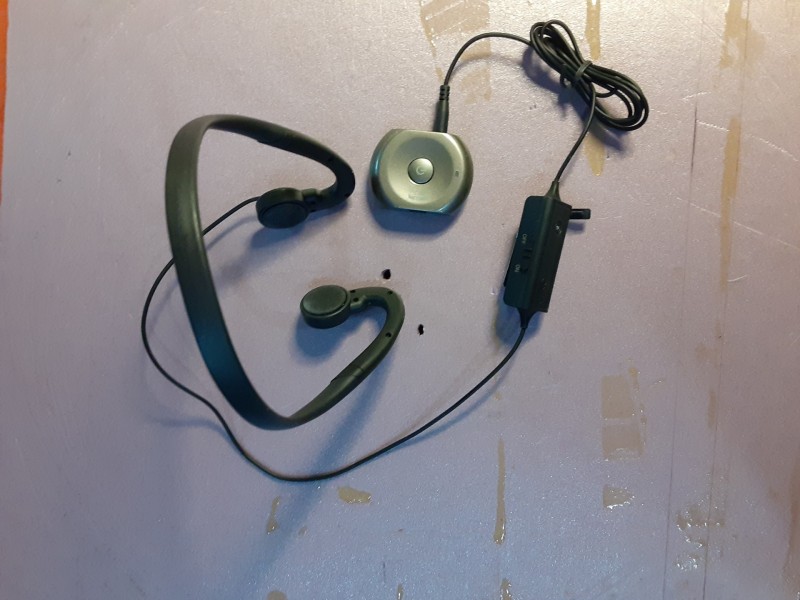
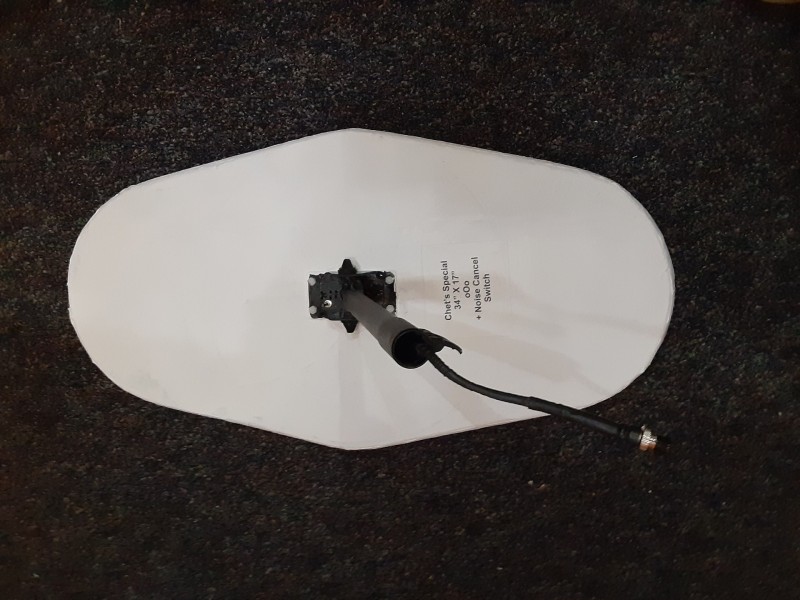
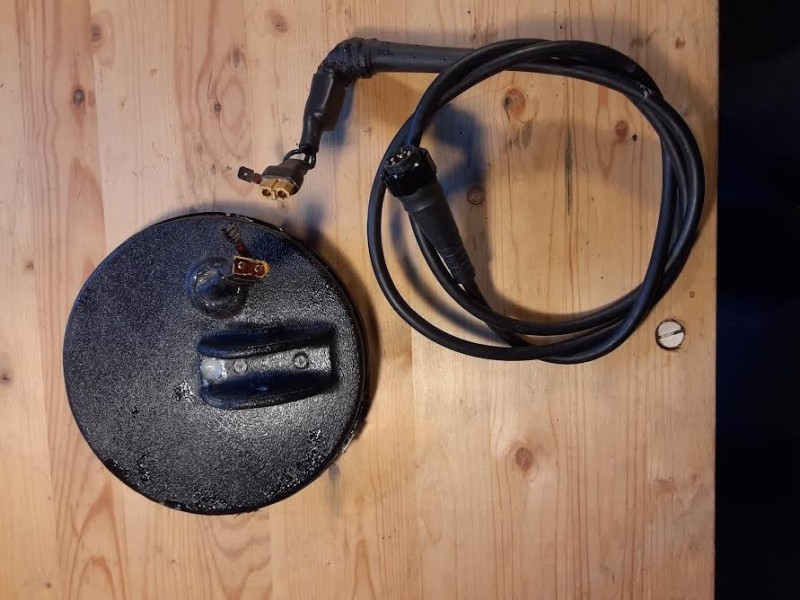
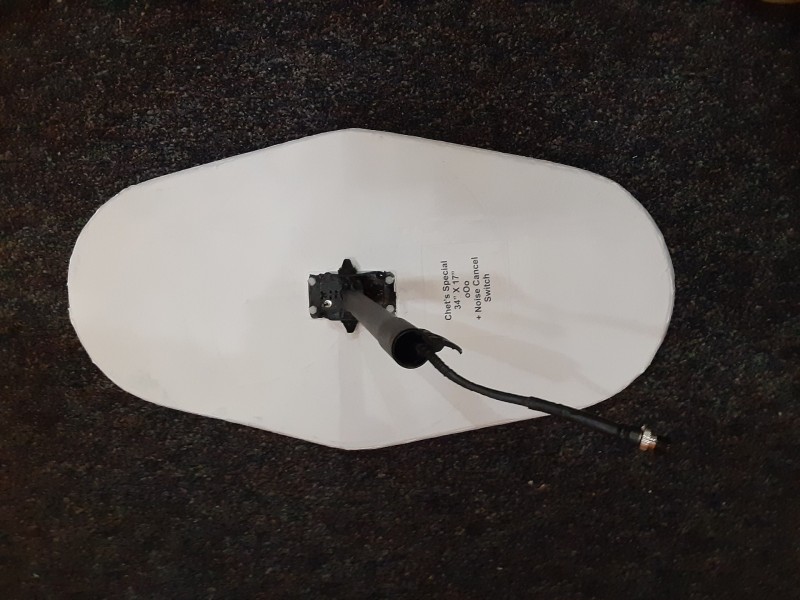
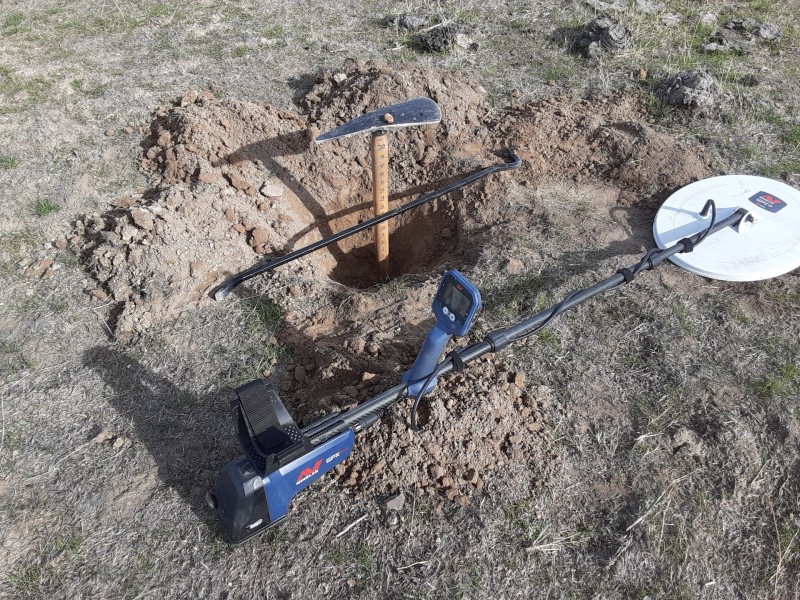
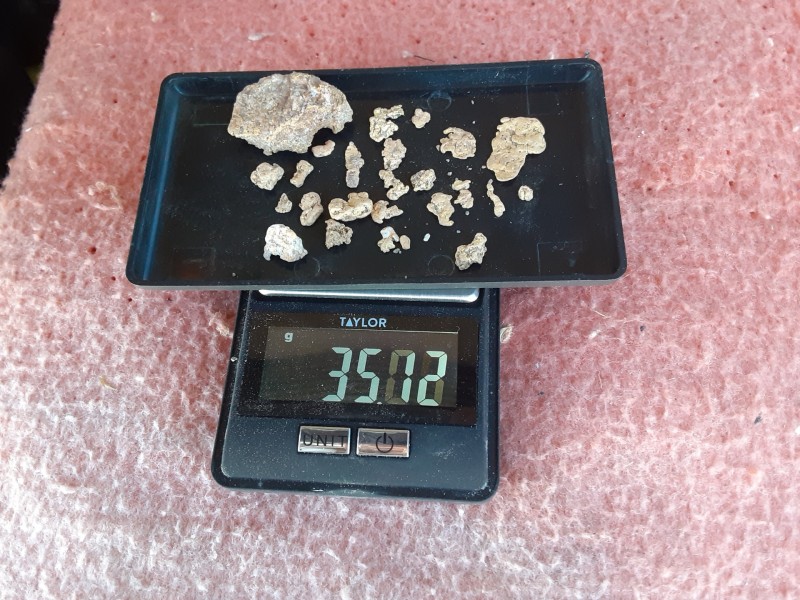
Woody Apparently Confirms That The 6000 Has No Active Shield
in Detector Prospector Forum
Posted
The shielding may be required to reduce EMI emission for government compliance requirements. That is to reduce EMI into nearby devices such as a cell phone.